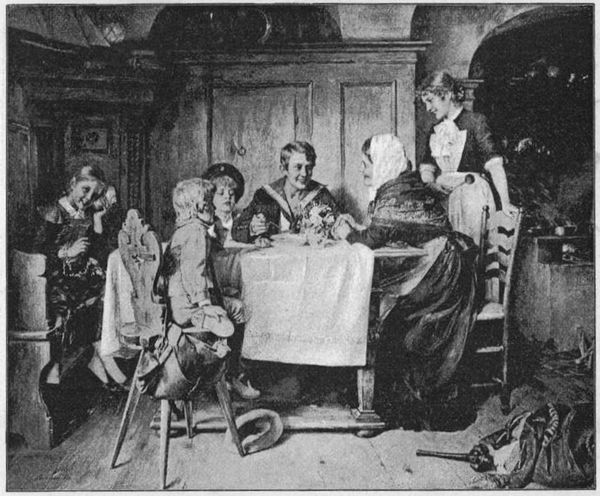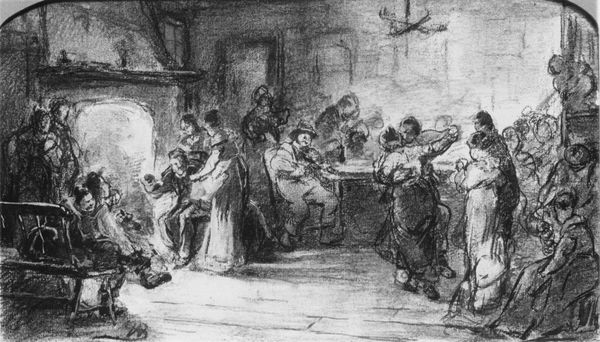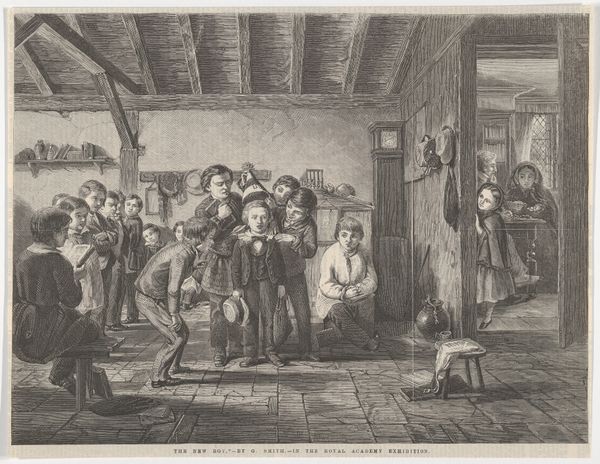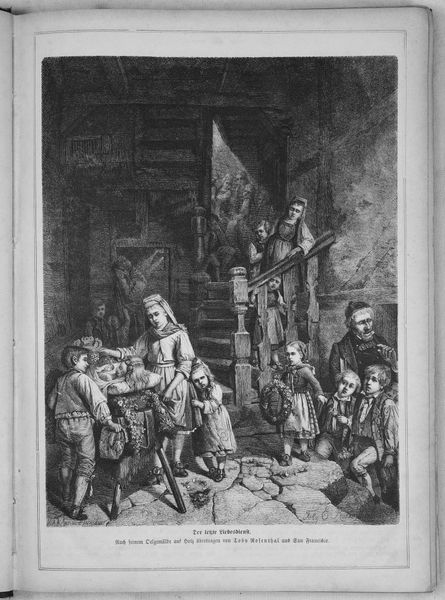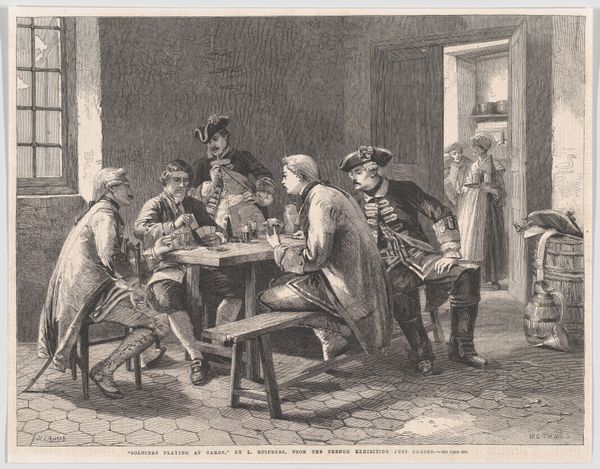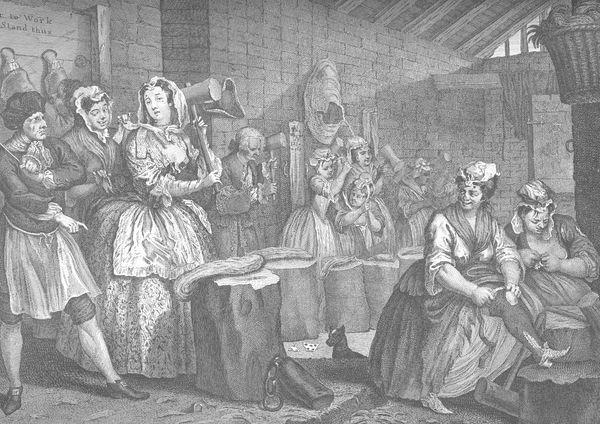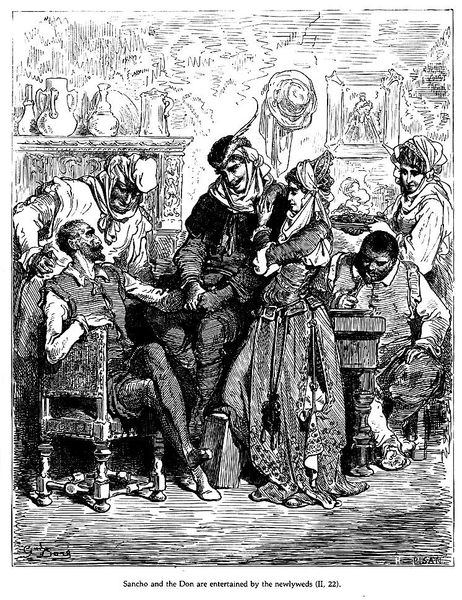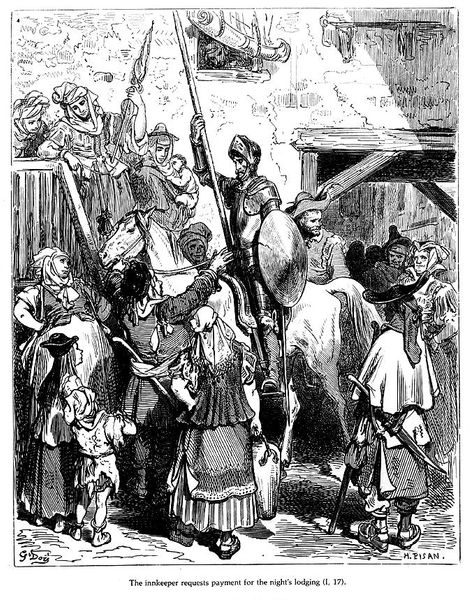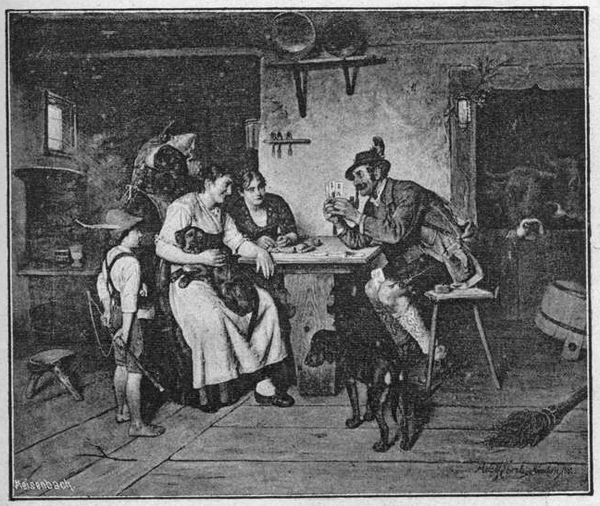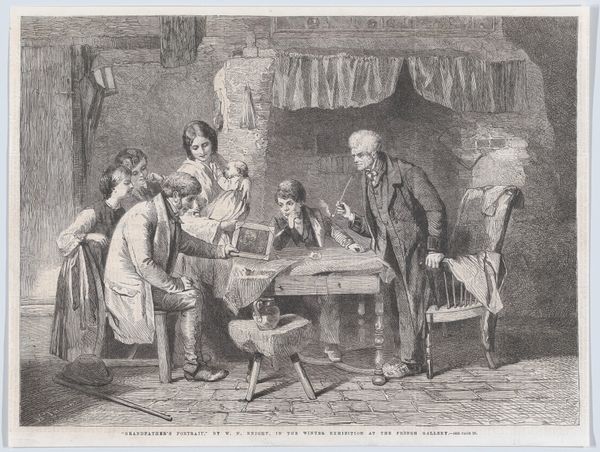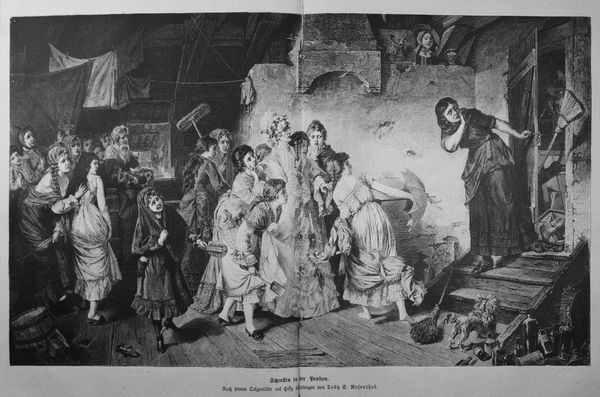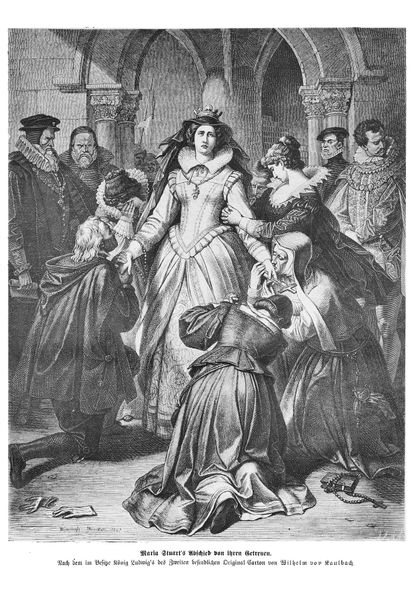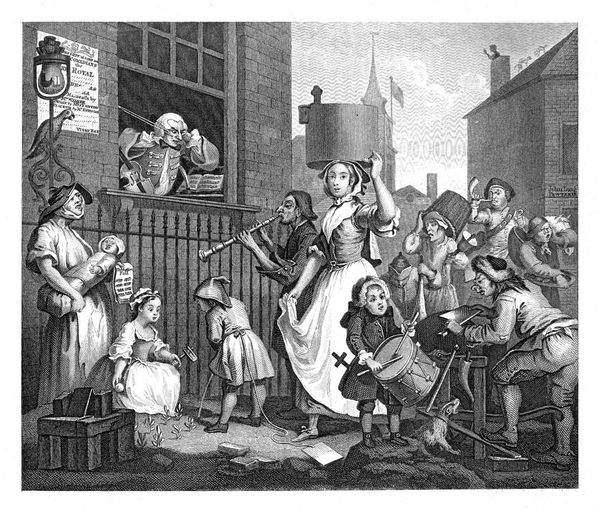
Copyright: Public domain
Editor: So, this is Adolf Eberle’s "Wedding Procession," painted in 1882. It feels like a snapshot from another time, full of cheer, though a little stiff. Everyone’s packed into the scene and, while celebratory, it also feels kind of formal. What jumps out at you when you look at it? Curator: It strikes me as a beautiful capture of communal joy, a symphony of social cues frozen in time. Note how Eberle directs our gaze. Our eyes dart between the merriment around the banquet table and the musical fanfare greeting the newlyweds, who appear to hesitate on the threshold. It begs the question: what is marriage if not the careful navigation between familiar comfort and unknown territory, a performance scored for both laughter and contemplation? Don't you think? Editor: Definitely a performance, and I didn’t quite notice how much the figures are almost staged... the musicians, for instance. Curator: Exactly! Think of it, then, as a theatrical production, carefully orchestrated to express a particular narrative. But look closer at the reactions – some are genuinely celebratory, while others are more…reserved, perhaps even skeptical? Art holds up a mirror, reflecting the full spectrum of human emotions on a landmark occasion. A splash of drama, don’t you think? Editor: Yes, the range of reactions is what makes it so engaging! It is like Eberle anticipated some sort of marital discord later on. Curator: I am certain. Which, if I am frank with you, seems about right in any long term marriage. Well spotted! This artwork holds multiple realities simultaneously. How glorious! Editor: I am delighted I spotted those visual cues! I’ll look more carefully from now on at these "Genre paintings," as that's the primary theme of this work, according to its tags. Curator: Splendid. Each work holds secrets to tell. And we just need the eyes, the will, to search and perceive.
Comments
No comments
Be the first to comment and join the conversation on the ultimate creative platform.
